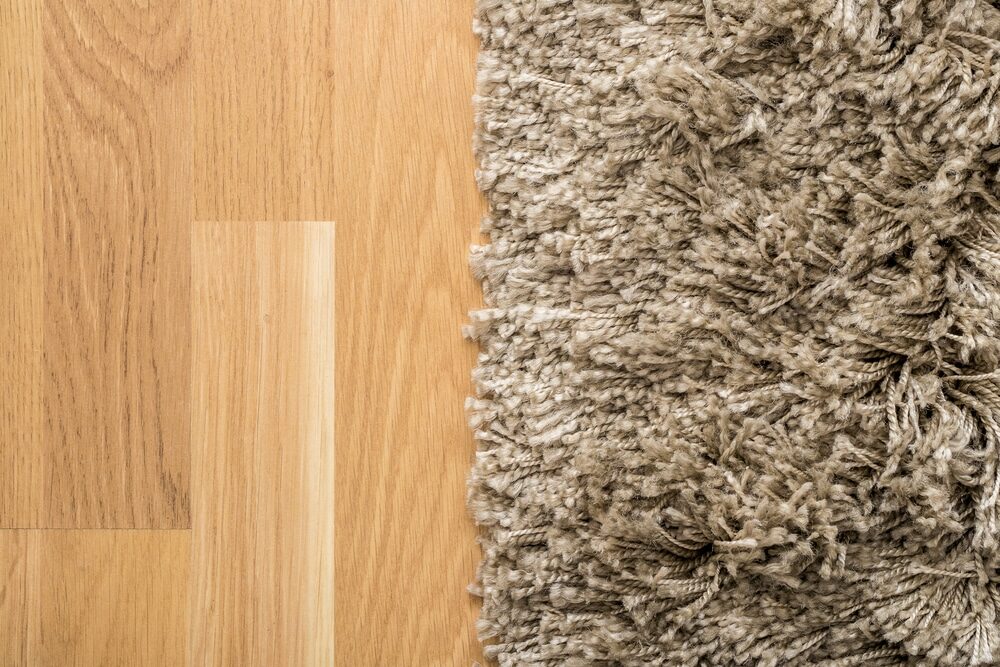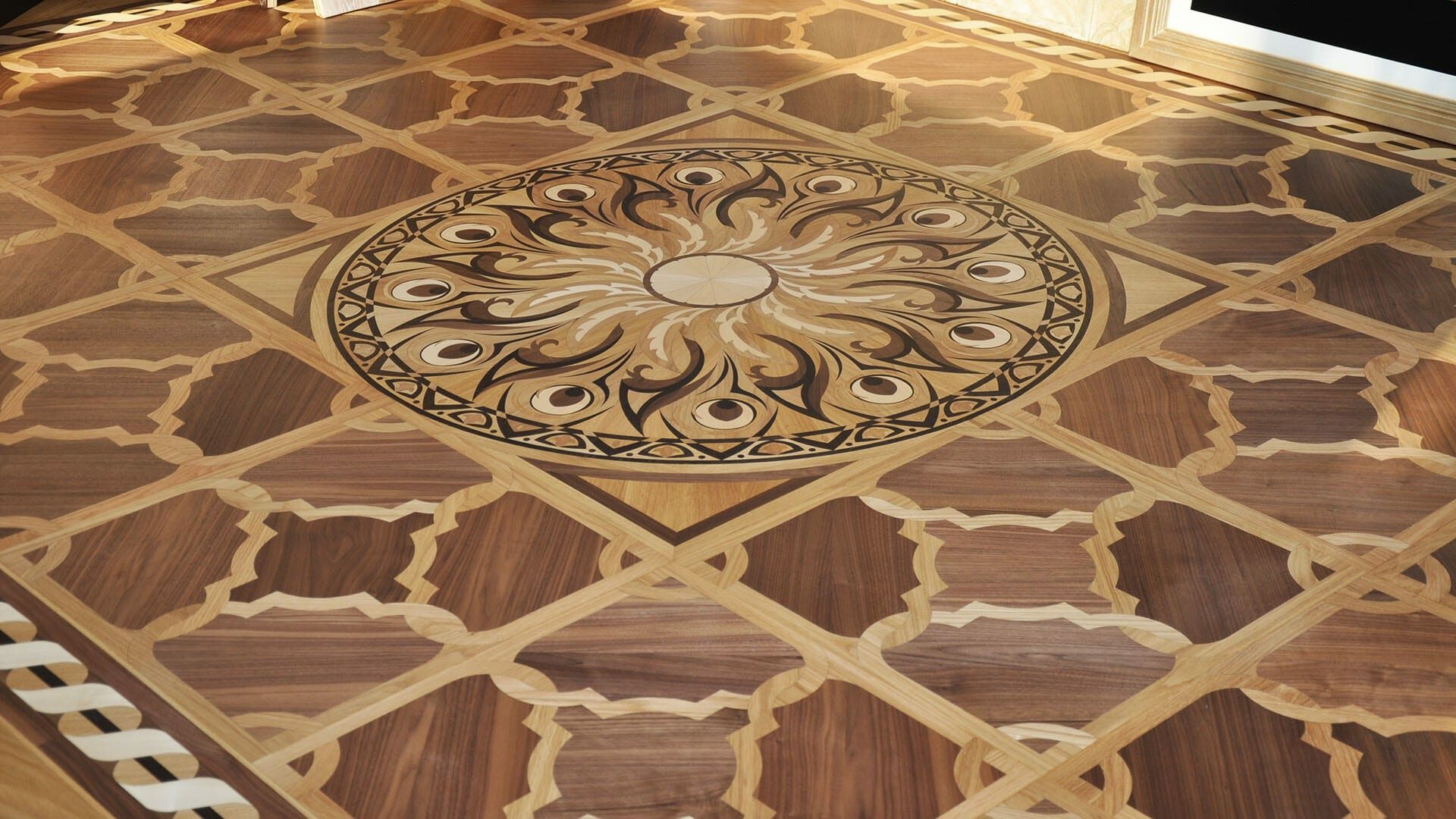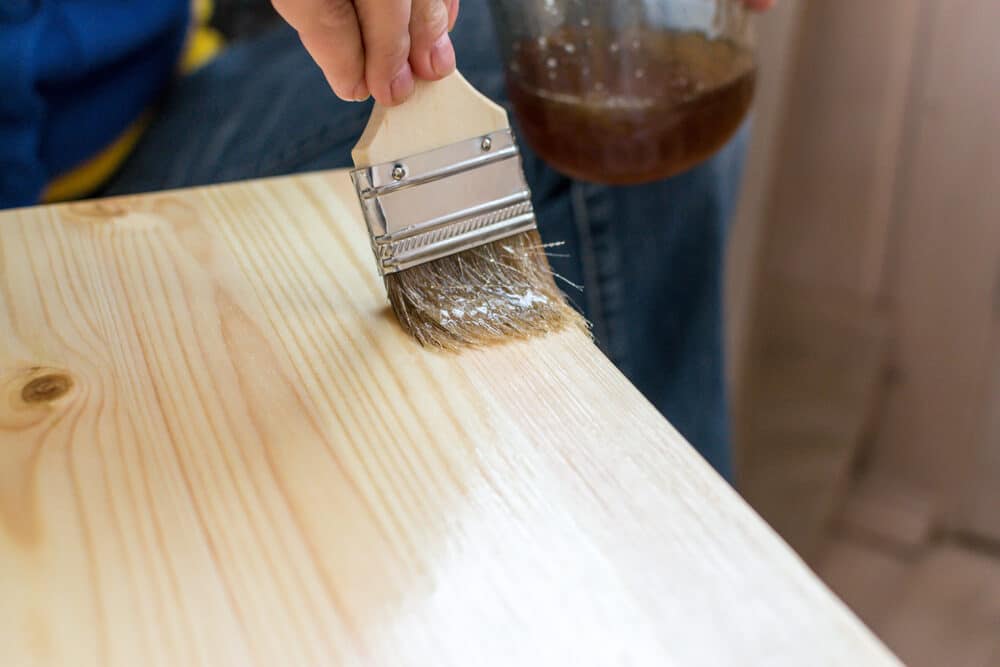London:
Nationwide:
Preserving Heritage: The Importance of Proper Care for Original Pine Floorboards in British Properties
Posted on April 21, 2024
Wood Floor Maintenance
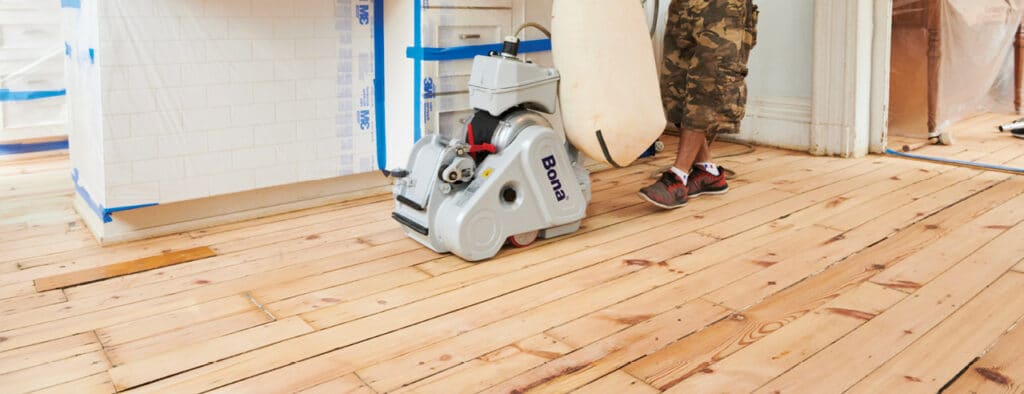
Maintaining Heritage: The Essential Care of Original Pine Floorboards in British Properties
In the tapestry of British architectural heritage, the preservation of original features within properties stands as a crucial endeavour that encapsulates more than mere aesthetic appeal. Among these historical elements, original pine floorboards are particularly significant. Often underfoot but not overlooked, these wooden canvases tell tales of craftsmanship and the passage of time, echoing the lives and eras they have withstood. British properties, celebrated for their diverse architectural styles and historical depth, often feature pine as a key flooring material, chosen for its availability and durability. In today’s age, where modern renovations and replacements are common, advocating for the preservation of these original pine floorboards becomes essential. This is not just about maintaining the visual integrity of a property but about embracing a piece of living history. This blog post seeks to explore the profound importance of properly caring for original pine floorboards in British properties. We will delve into the historical significance of pine in British construction, discuss the benefits and challenges of preservation, and provide practical advice for maintaining and restoring these precious elements of heritage. By understanding and appreciating the value of these floorboards, property owners and caretakers can contribute to the conservation of Britain’s rich architectural legacy.
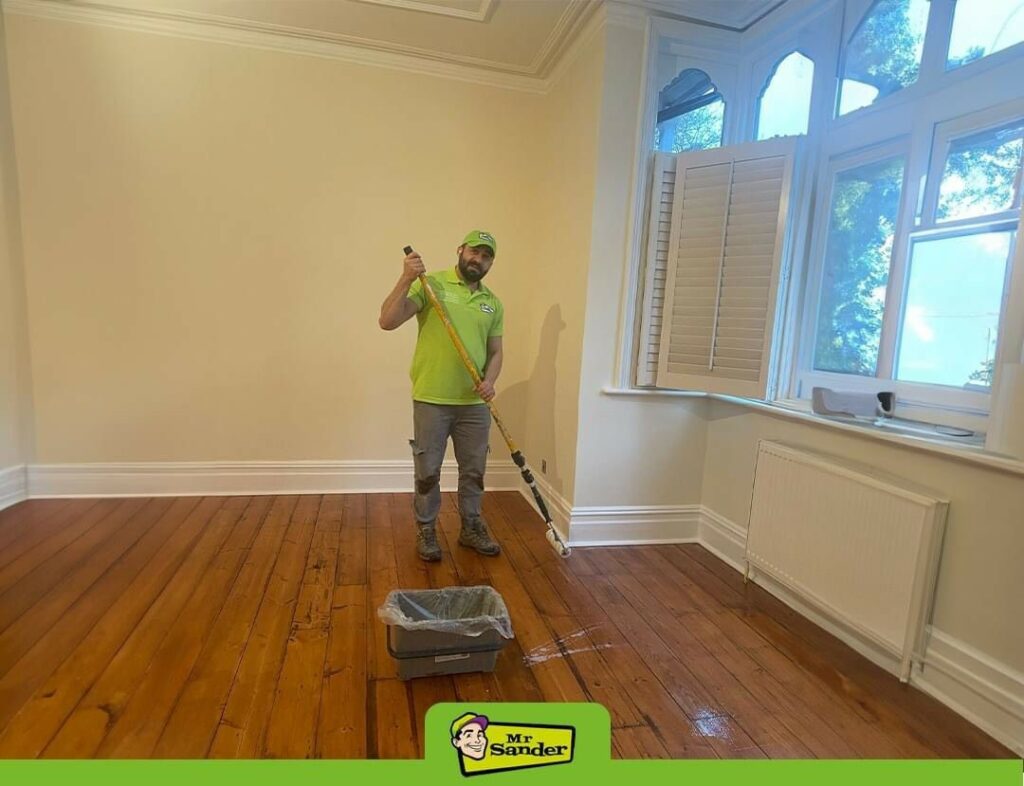
Historical Significance of Pine Floorboards
Pine floorboards have long been a cornerstone in British architectural history, a testament to both the resourcefulness and the aesthetic preferences of the eras they originate from. Historically, pine was favoured for its widespread availability and its relatively easy workmanship, which made it a practical choice for builders and carpenters throughout the centuries.
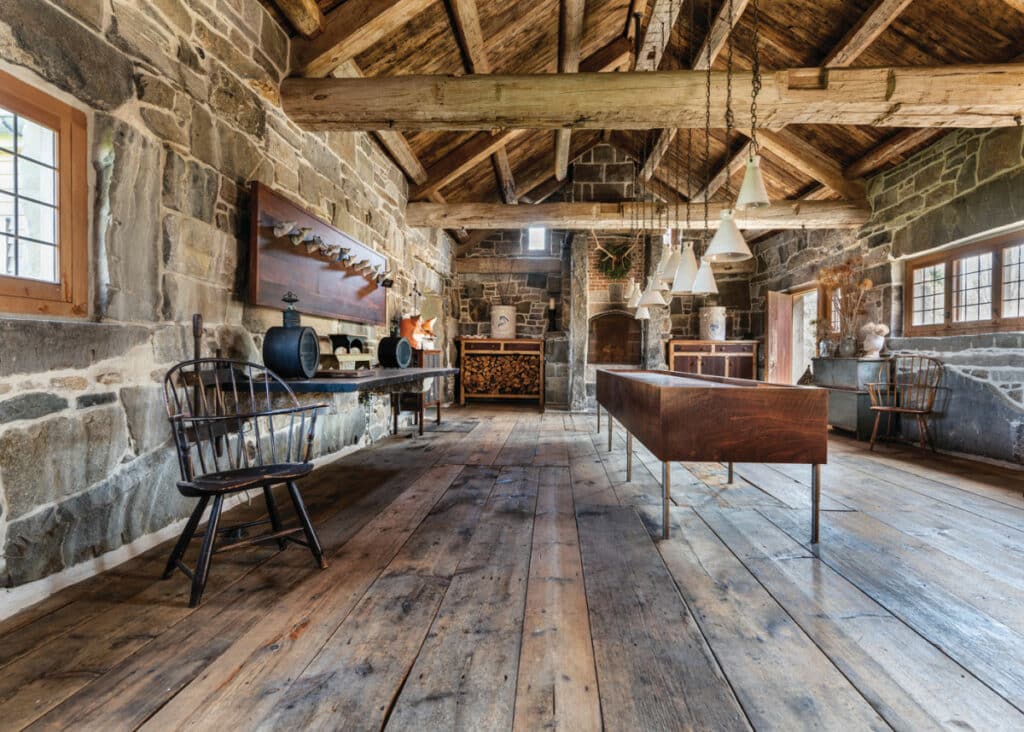
Origins and Usage
In Britain, the extensive use of pine for flooring dates back to the 17th century, coinciding with the period’s flourishing trade and maritime expansions. Pine, often imported from the Baltic region due to its superior quality and durability, became a material of choice for flooring in a variety of properties, from humble cottages to grand manor houses. Its softwood nature allowed for easier cutting and installation, which was particularly valuable in the days before advanced woodworking tools.

Symbol of Social Status
During the Victorian and Georgian eras, the presence of pine floorboards often indicated a household’s social status. In wealthier homes, pine floors were sometimes hidden beneath lavish carpets or more expensive hardwood finishes, while in more modest settings, the pine was left exposed, sometimes stained or painted to mimic more expensive materials. This versatility has made pine an integral part of interior design trends over the years.

Conservation and continuity
Today, original pine floorboards are cherished for their historic value and the patina they acquire with age—an irreplaceable finish that embodies decades or even centuries of history. The marks, stains, and scratches on these floorboards tell stories of past occupants and events, providing a tangible connection to the historical life of the property. The conservation of these floorboards is not merely about preserving a physical structure but about maintaining a link to the past. Each board preserved is a piece of the narrative that contributes to the building’s overall historical integrity. For conservationists and historians, these elements are invaluable in piecing together the lifestyles, construction techniques, and aesthetic preferences of earlier times. In the next sections, we will explore how the preservation of these historical artefacts brings benefits beyond mere aesthetics, contributing to the property’s cultural significance and enhancing its value. By understanding the historical importance of pine floorboards, property owners can make informed decisions about their care and preservation, ensuring that these heritage elements continue to grace our environments with their presence and history.
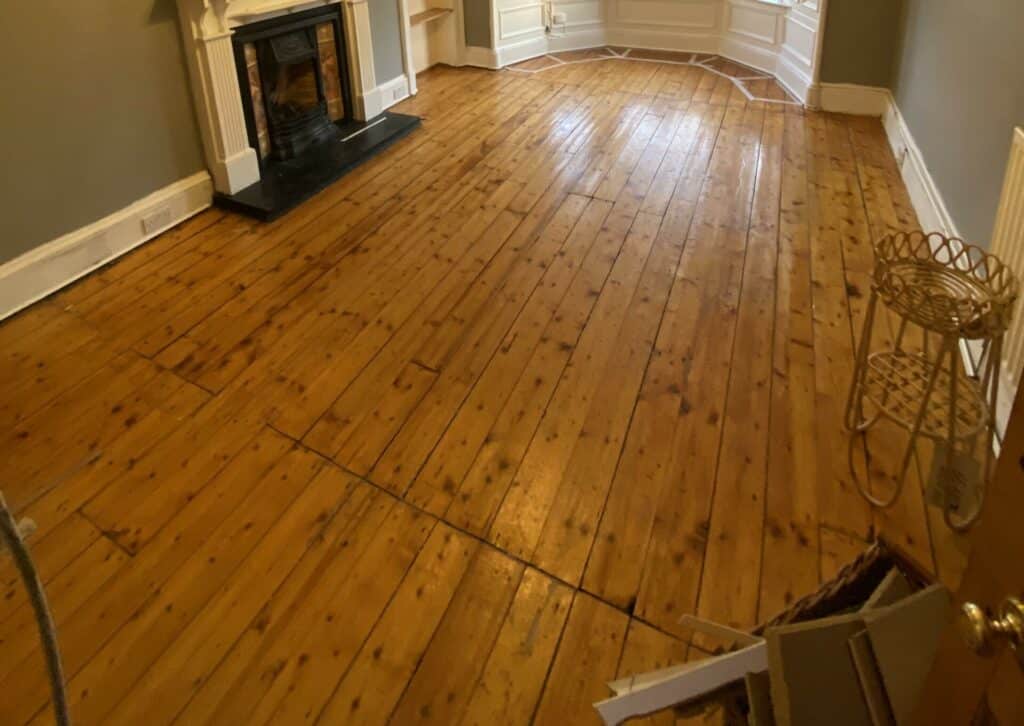
Benefits of Preserving Original Pine Floorboards
The preservation of original pine floorboards in British properties offers numerous benefits, extending beyond the mere retention of a building’s aesthetic authenticity. These benefits encompass cultural, economic, and environmental dimensions, each contributing to a compelling case for the careful upkeep of these historical elements.
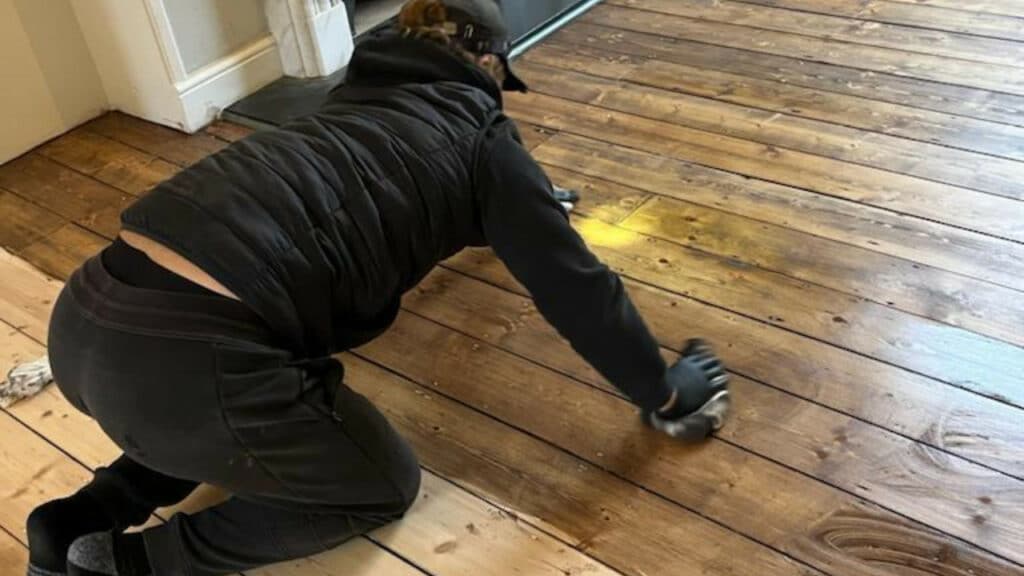
Aesthetic and authentic appeal
Original pine floorboards add an irreplaceable character to a property; their unique grain and warm, natural tones provide an ambiance that modern materials struggle to replicate. Over years and decades, pine develops a rich patina that tells the story of the building—each mark and irregularity adds depth and personality. This authentic charm is especially prized in heritage properties, where the aim is to maintain the historical integrity of the interiors.
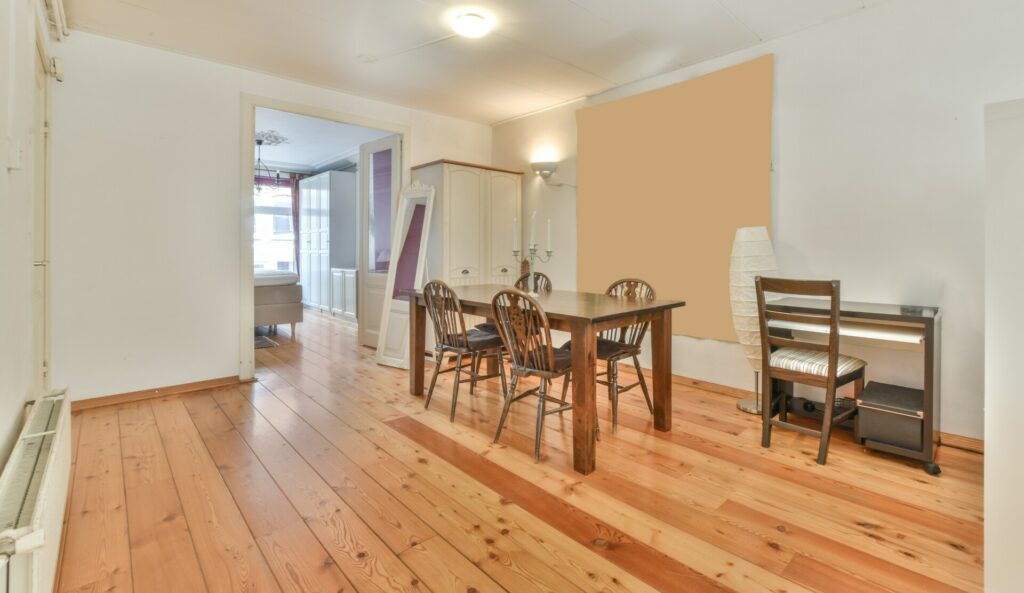
Increased Property Value
Properties that retain their original features, including pine floorboards, often attract a premium on the real estate market. Prospective buyers who value heritage and originality are typically willing to pay more for a property that maintains its authentic features in good condition. The presence of original pine floorboards can be a significant selling point, signalling quality and continuity with the past that new materials cannot offer.
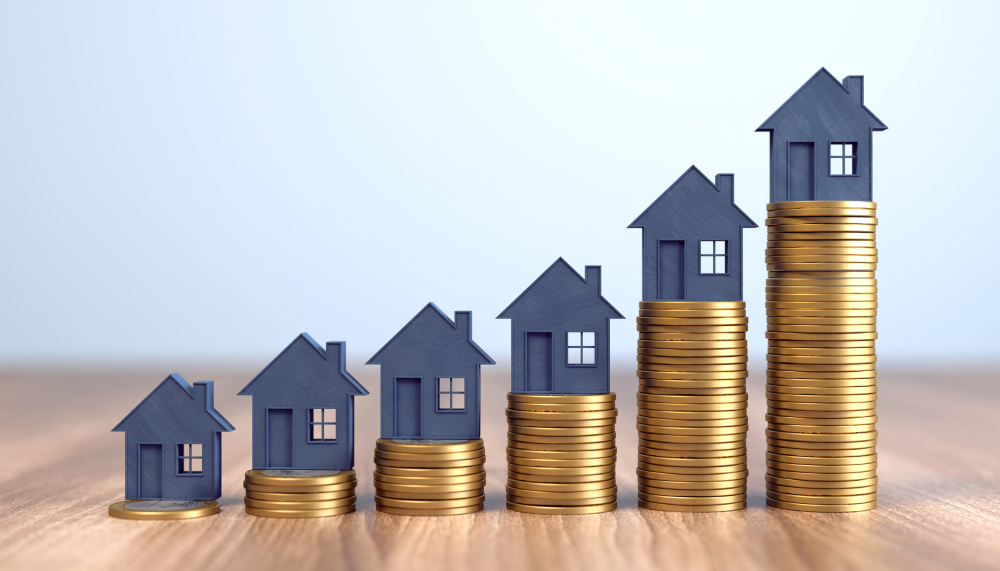
Environmental Considerations
From an environmental standpoint, preserving existing floorboards is more sustainable than replacing them with new materials. The conservation of original pine floors reduces the demand for new raw materials, minimises waste, and decreases the carbon footprint associated with manufacturing and transporting replacement flooring. Additionally, pine is a naturally insulating material, which can improve energy efficiency in older buildings by retaining heat and regulating indoor temperatures.
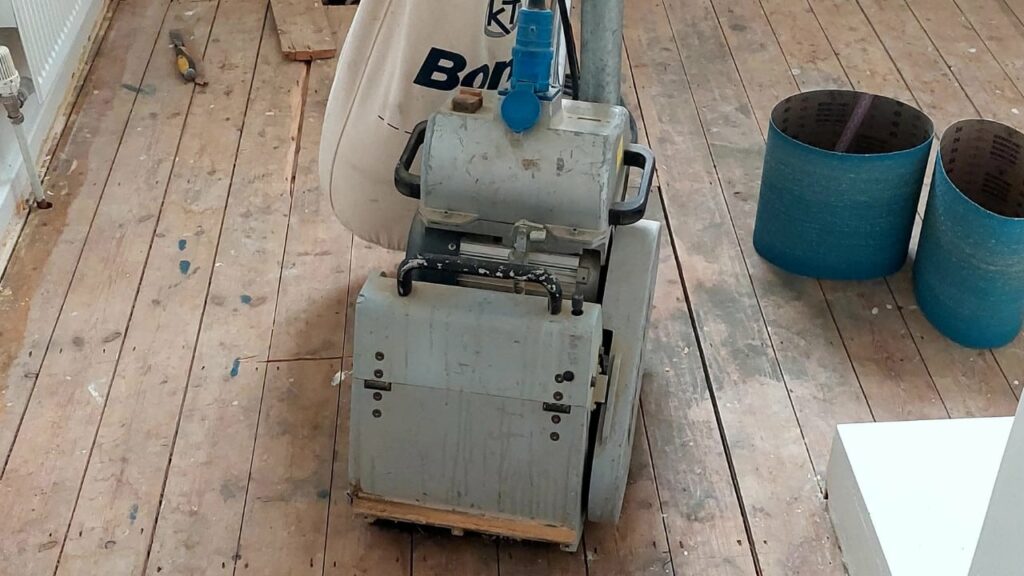
Cultural and historical preservation
Original pine floorboards are not merely functional elements of a building; they are part of the cultural heritage. By preserving these features, owners and restorers keep alive the craftsmanship and architectural practices of past centuries. This preservation is crucial for educational purposes as well, offering future generations a direct link to the past and enabling them to experience history in a more intimate and tangible manner than books or photographs could provide.
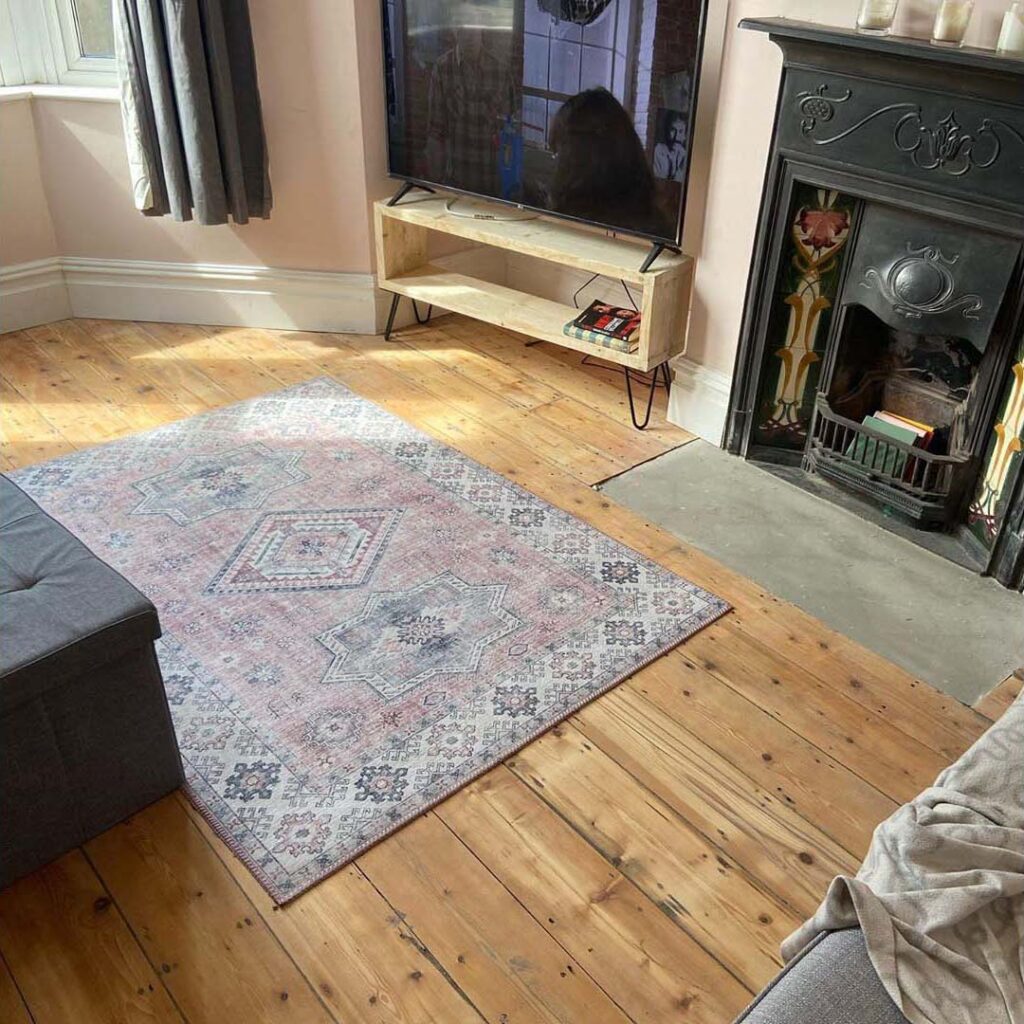
Psychological Benefits
There is also a psychological benefit to preserving historical elements like pine floorboards. Living or working in environments that maintain their historical features can provide a sense of continuity and stability, offering comfort and grounding. Additionally, the natural materials and textures of wood are known to have a positive impact on mental well-being, contributing to a more serene and inviting atmosphere.
Support for Local Crafts and Skills
Preserving and restoring original floorboards supports traditional crafts and skills, providing employment opportunities for craftsmen who specialize in heritage restoration techniques. This not only helps keep such skills alive but also promotes the economy of local communities involved in conservation efforts. By understanding these benefits, property owners can appreciate why the careful preservation of original pine floorboards is more than just a nod to the past—it is an investment in the future of the property and a commitment to sustainable and responsible ownership. The subsequent sections will delve into the common threats these historical floorboards face and how to address them effectively.
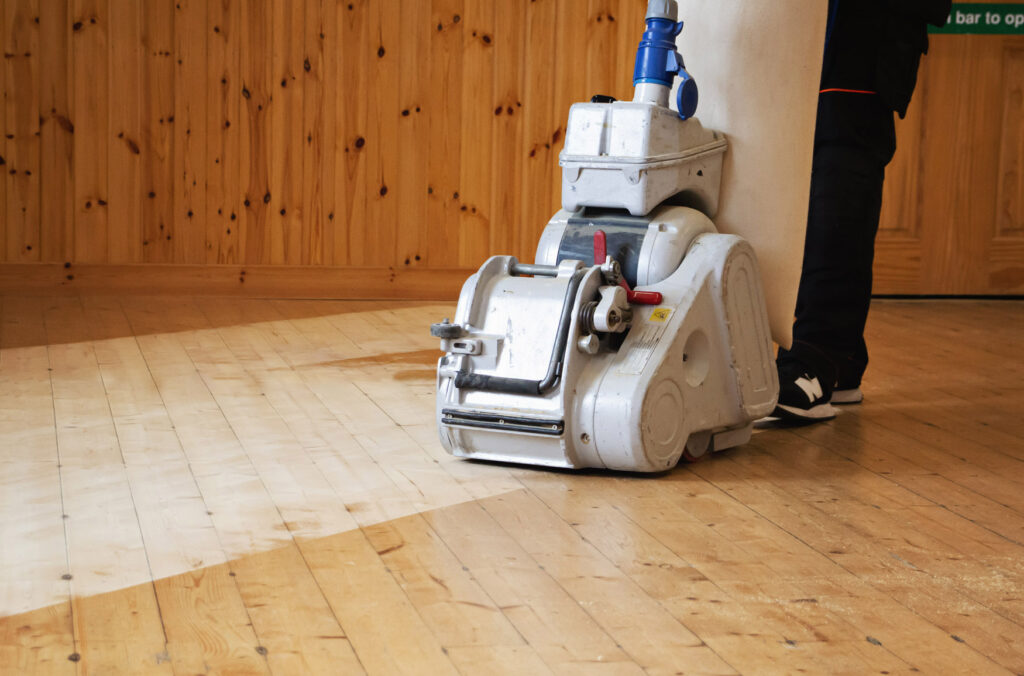
Common Threats to Pine Floorboards
Original pine floorboards, while robust and enduring, face several threats that can compromise their integrity and appearance. Understanding these threats is crucial for property owners and restorers in order to implement effective preventative measures and care routines. Here are some of the most common hazards to pine floorboards:
Environmental Damage
- Moisture and Humidity: Pine is particularly susceptible to moisture damage. Excessive humidity or direct water exposure can lead to swelling, warping, and eventually rotting of the wood. In contrast, very low humidity can cause the wood to shrink and crack. It’s vital to maintain a stable indoor environment with controlled humidity levels to protect the floorboards.
- Sunlight Exposure: Prolonged exposure to direct sunlight can cause the pine to fade and become discolored. Ultraviolet (UV) rays can weaken the wood over time, leading to brittleness and degradation. Using curtains, blinds, or UV-protective finishes can help mitigate this issue.
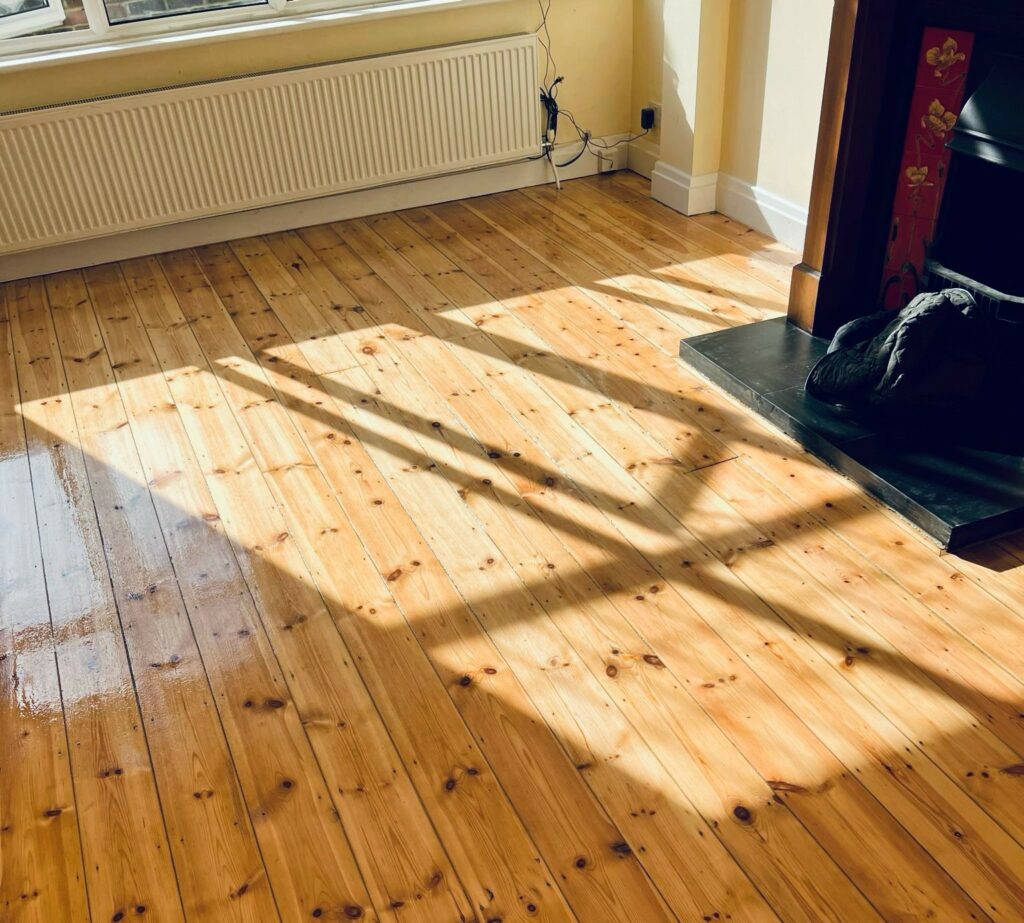
Physical Wear and Tear
- Foot Traffic: Regular foot traffic can wear down the finish on pine floorboards and eventually the wood itself, especially in high-traffic areas. Implementing a no-shoe policy, using rugs in strategic locations, and regular maintenance of the finish can reduce this wear.
- Furniture and Impact Damage: Heavy furniture can scratch, dent, or even gouge unprotected pine floorboards. Using protective pads under furniture legs and being cautious with heavy items can prevent significant damage.
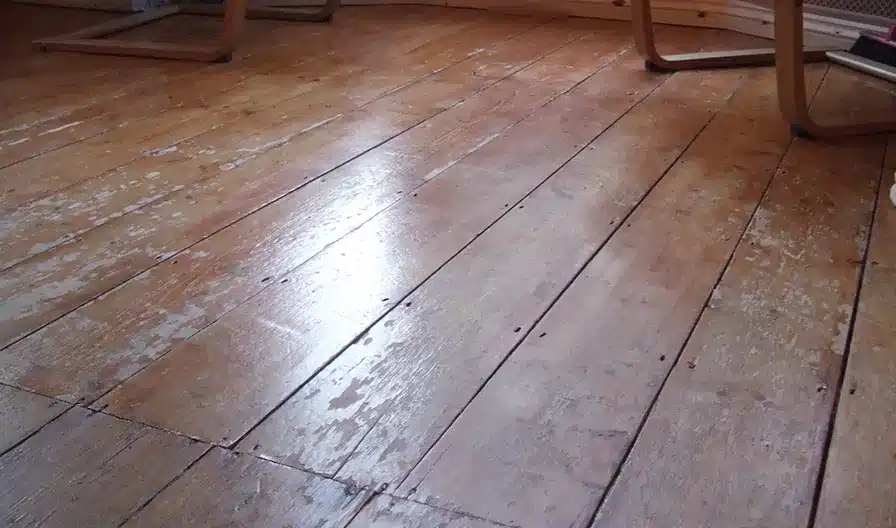
Pest Infestations
- Woodworms and Other Insects: Certain beetles lay eggs in cracks in wood, and the larvae bore through the wood, causing structural damage. Regular inspections and treating the wood with appropriate insecticides can prevent infestations.
- Rodents: Small rodents can also damage wooden floorboards by gnawing. Keeping a clean environment and blocking potential entry points helps prevent rodent-related damage.
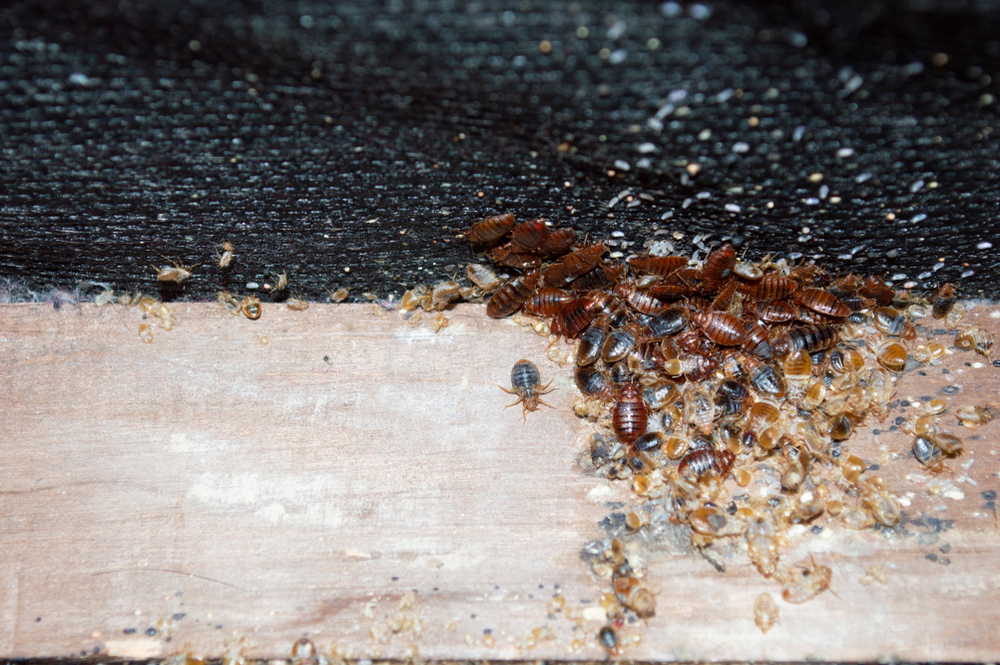
Inappropriate renovations and repairs
- Incompatible Materials: Using modern materials that do not ‘breathe’ like traditional ones can trap moisture in pine floorboards, leading to decay. It’s important to use materials and repair techniques that are compatible with the original methods and materials.
- Harsh Chemicals: The use of harsh cleaning chemicals can strip away the natural oils in pine, leading to dryness and brittleness. It’s advisable to use pH-neutral cleaners specifically designed for use on wood.
- Improper Sanding and Refinishing: Over-sanding can thin the floorboards, weakening their structural integrity, while incorrect refinishing can lock in moisture or leave the wood unprotected. Professional advice or services should be sought for sanding and refinishing jobs.
Environmental Considerations
- Climate Change: Fluctuating climates and extreme weather conditions can introduce new stresses on historic buildings, including pine floorboards, necessitating more adaptive maintenance strategies.

Addressing these threats involves a combination of regular maintenance, timely repairs, and a thorough understanding of the material properties of pine. The next sections will detail how to assess the condition of pine floorboards and outline effective maintenance and restoration techniques to ensure these historic elements continue to enhance British properties for years to come.
Assessment and diagnosis
Properly assessing the condition of original pine floorboards is a critical step in ensuring their longevity and maintaining the integrity of a property. Understanding the current state of the floorboards allows property owners and conservationists to determine the appropriate care or restoration required. Here’s a guide to effectively assessing and diagnosing the condition of pine floorboards:
Visual Inspection
- General Appearance: Begin with a thorough visual inspection to check for obvious signs of wear and tear, such as scratches, stains, or discoloration. Note the areas that receive high foot traffic, as these are more likely to show signs of wear.
- Surface Damage: Look for cracks, splits, or splintering on the surface of the boards. These can be indicative of dryness or physical impact damage.
- Signs of Rot and Decay: Check for softer spots or areas where the wood may have darkened significantly, as these can be signs of rot. Use a small tool to gently probe suspected areas; if the wood feels spongy or crumbles easily, this is a sign of advanced decay.
- Unevenness and Warping: Assess whether the floorboards lay flat or show signs of warping or buckling. This can be caused by moisture issues or improper installation.
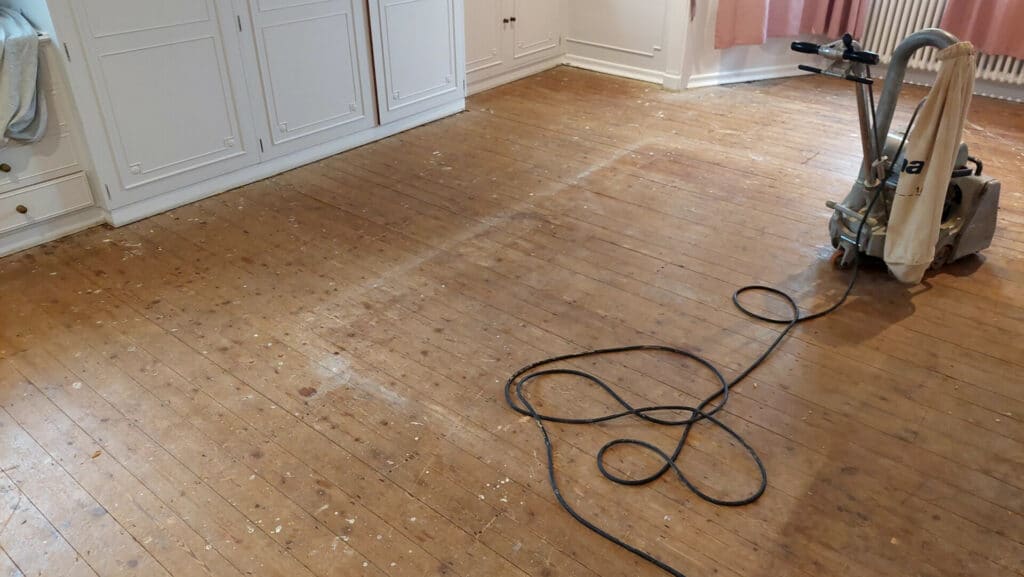
Moisture Testing
- Use of a Moisture Metre: A moisture metre can be used to determine the moisture content of the wood. This is crucial, as excessive moisture can lead to rot and mould, while too little moisture can cause shrinking and cracking. Ideal moisture levels for pine floorboards usually range between 6% and 12%, depending on the local climate.
- Environmental Humidity Check: Alongside checking the moisture content of the wood, it’s also advisable to monitor the room’s humidity levels. Consistent levels that are too high or too low can adversely affect pine wood.
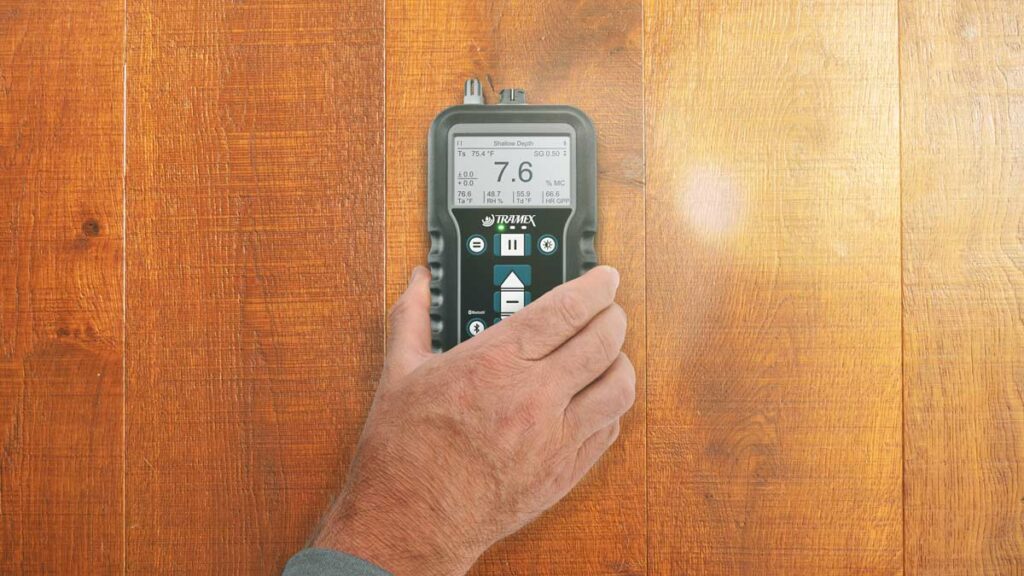
Structural Integrity
- Load-Bearing Capacity: Assess the floorboards for their ability to bear weight without flexing or creaking excessively. This can help determine if any underlying support structures are weakened or damaged.
- Integrity of Joists and Subfloor: Inspect the joists and subfloor where accessible, as issues here can affect the floorboards directly. Look for signs of rot, pest infestation, or structural damage.

Professional Assessment
- Consulting a Conservator: If you are unsure about the condition of the floorboards or how to address specific issues, consulting a professional conservator or a specialist in historic buildings can provide deeper insights and appropriate solutions.
- Detailed Inspection and Reporting: For comprehensive assessment, especially in the case of valuable heritage properties, detailed reports prepared by professionals can outline the condition, risks, and recommended interventions for the pine floorboards.
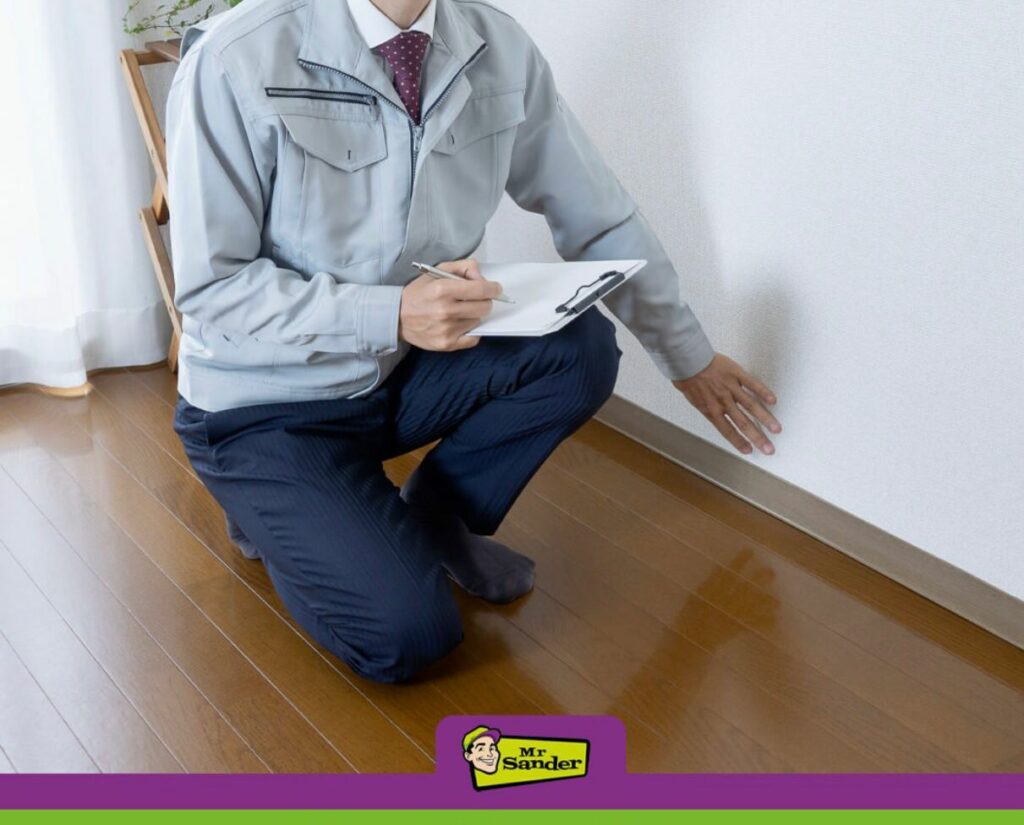
By systematically assessing and diagnosing the condition of pine floorboards, property owners can make informed decisions about necessary maintenance, repairs, or restorations. This proactive approach helps preserve the aesthetic and structural qualities of the floorboards, ensuring that they continue to contribute to the property’s historical significance and value. The following section will discuss maintenance and care tips to address the identified issues and protect the floorboards over time.
Maintenance and care tips
Proper maintenance and care are essential to preserving the beauty and integrity of original pine floorboards in British properties. Here are some practical tips to ensure that these historical elements remain in good condition for years to come:
Routine Cleaning
- Regular Sweeping and Vacuuming: To prevent dirt and grit from scratching the wood, sweep or vacuum your pine floorboards regularly using a soft brush attachment. This should be part of your daily or weekly cleaning routine, especially in high-traffic areas.
- Gentle Mopping: Use a damp (not wet) mop for cleaning the floorboards. Too much water can seep into the wood, causing swelling or warping. Preferably, use a microfiber mop and a cleaner specifically formulated for wooden floors.
- Immediate Spill Cleanup: Clean spills immediately to prevent water marks or stains. Pine is particularly absorbent, and liquids can quickly penetrate the surface.
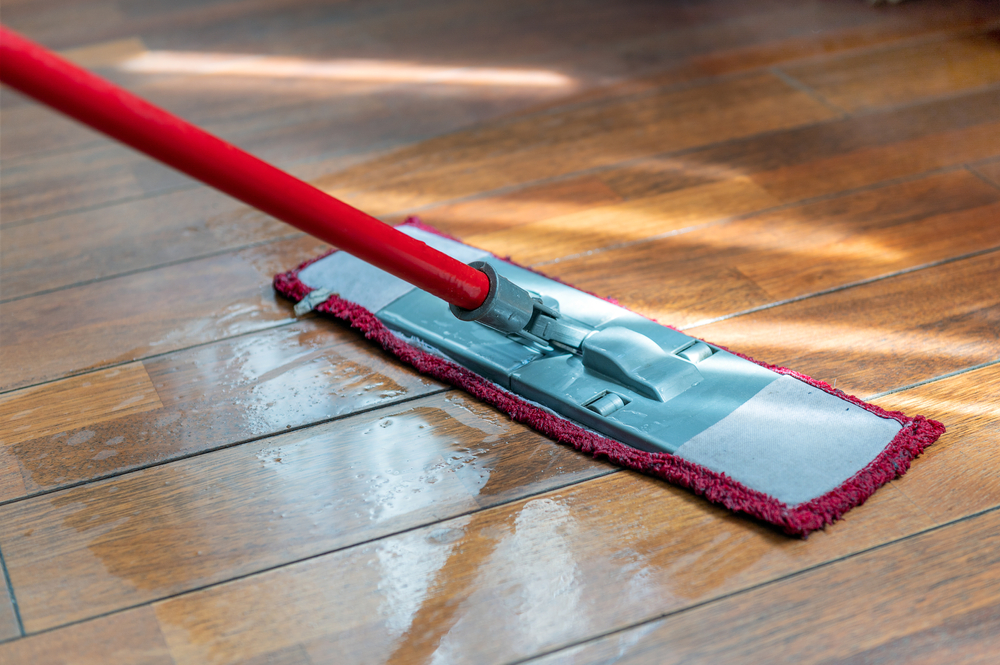
Protecting the surface
- Use of Rugs and Mats: Place rugs or mats at entrances and high-traffic areas to minimize wear. Ensure that these are non-slip and breathable to avoid moisture trapping underneath.
- Furniture Pads: Attach felt pads to the legs of furniture to prevent scratches and gouges when items are moved or used.
- Avoid Dragging Furniture: Lift rather than drag furniture across the floor to avoid scratching the wood.
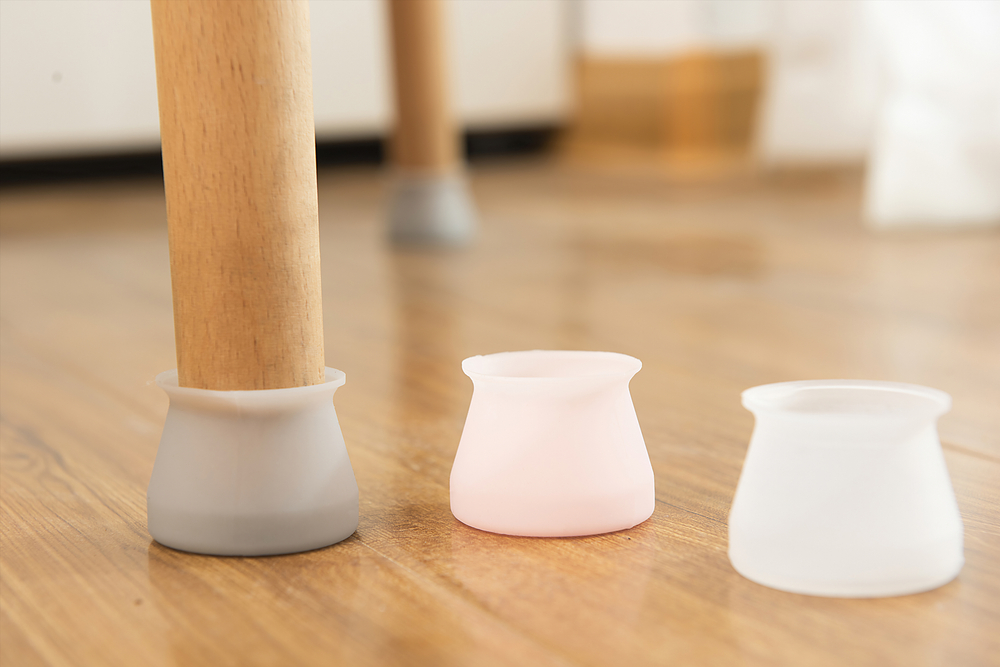
Environmental Management
- Control Humidity Levels: Aim to maintain indoor humidity levels between 40 and 60% to prevent the wood from expanding or contracting excessively. Use dehumidifiers or humidifiers as necessary, depending on the climate.
- Shield from Sunlight: Protect the floorboards from prolonged exposure to direct sunlight, which can cause discoloration and deterioration. Use curtains, blinds, or UV-filtering window films to mitigate sun damage.
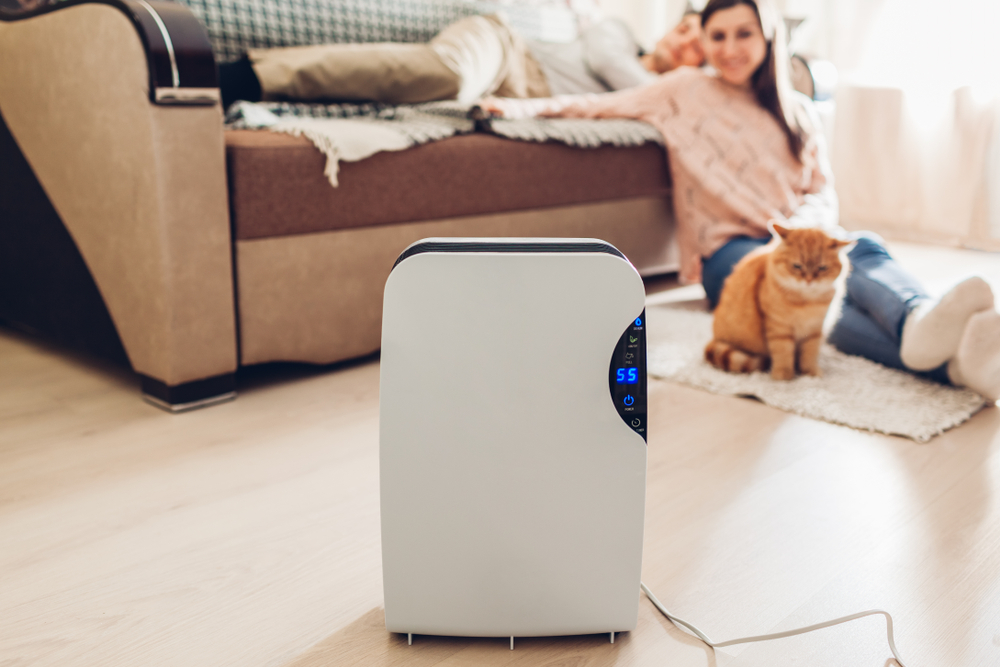
Regular maintenance checks
- Periodic Inspections: Regularly inspect the floorboards for signs of damage, such as cracks, warping, or lifting. Early detection can prevent more extensive damage and costly repairs.
- Refinishing When Necessary: Over time, the finish on pine floorboards can wear thin. Consider refinishing the floors every few years to restore their protective layer and keep them looking fresh. Ensure this is done using appropriate materials and techniques that match the historical character of the floorboards.
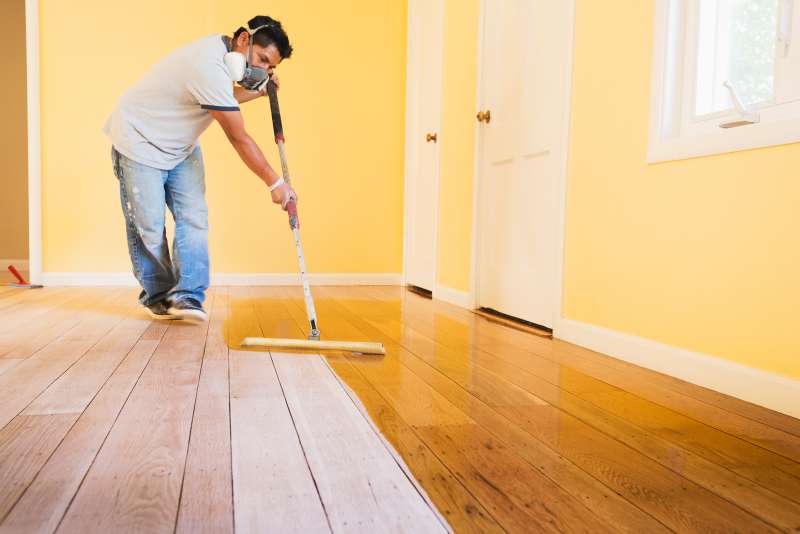
Using the Right Products
- Appropriate Cleaners: Always use pH-neutral cleaners designed for wood floors. Avoid harsh chemicals, as they can strip the natural oils from the wood, leading to dryness and brittleness.
- Natural Wax or Oil: For older or more delicate pine floorboards, using natural wax or oil can help nourish the wood and protect it from damage. These products enhance the natural beauty of pine and provide a breathable finish that doesn’t trap moisture.
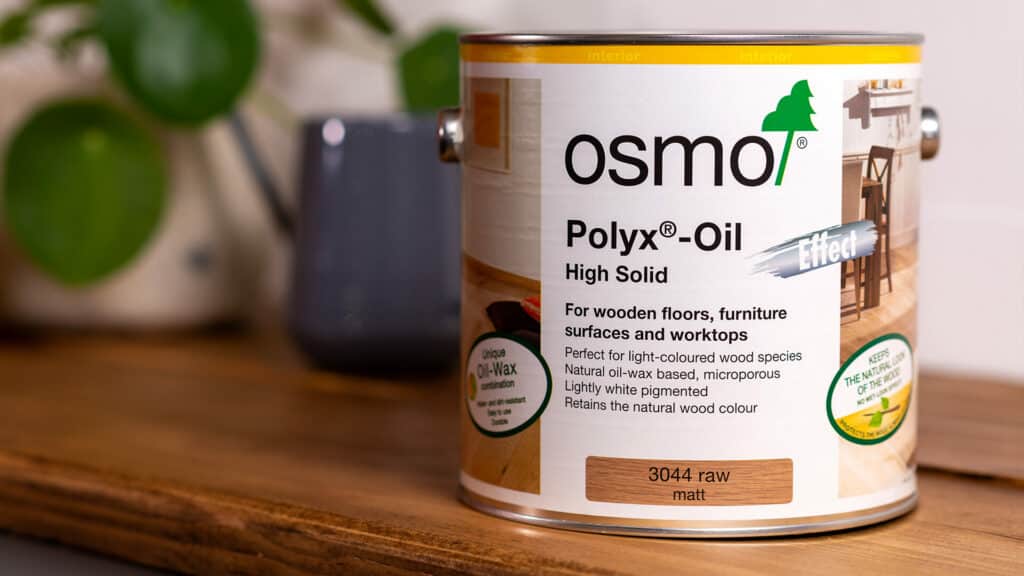
Professional Care
- Seek Expert Advice: For significant maintenance issues or when unsure about the best care methods, consult with professionals who specialise in historic wood flooring. They can provide guidance tailored to your specific needs and the historical significance of the floorboards.
By adhering to these maintenance and care tips, you can help ensure that the original pine floorboards in your property continue to provide both functional and aesthetic value. Proper care not only preserves the floorboards but also maintains the overall heritage and integrity of the property.

Restoration Techniques
Restoring original pine floorboards is a delicate task that requires careful planning and execution to maintain the integrity and historical value of the wood. Here are some effective techniques and considerations for restoring pine floorboards in British properties:
Surface cleaning and preparation
- Gentle Cleaning: Start with a thorough cleaning to remove dirt and old wax layers. Use a soft brush or cloth and a mild detergent suitable for wood. Avoid soaking the wood; a damp cloth is sufficient.
- Removing Old Finish: If the floorboards are finished with paint or varnish that is peeling or damaged, it may be necessary to strip this layer. Use a chemical stripper that is gentle on old wood, and apply it according to the manufacturer’s instructions. Always work in a well-ventilated area and wear protective gear.
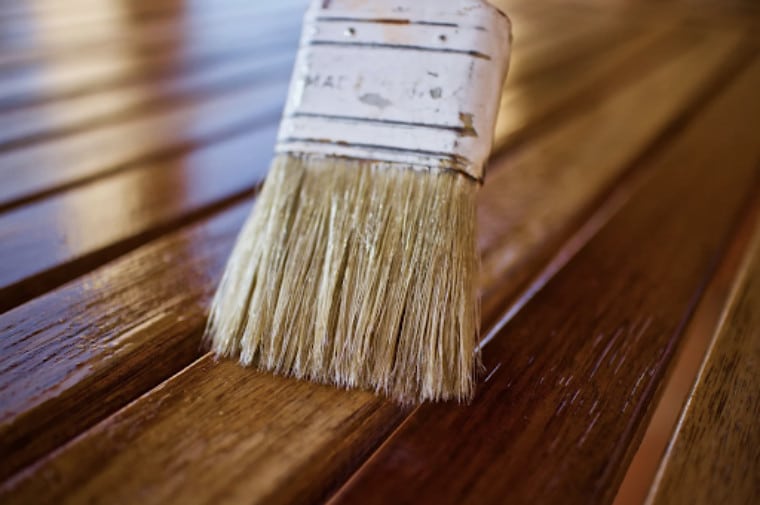
Minor Repairs
- Filling Small Gaps and Cracks: Use a wood filler that matches the colour of the original pine to fill in small gaps, cracks, or holes. For larger gaps, especially between floorboards, slivers of matching wood can be glued into place for a more durable and visually appealing repair.
- Fixing Loose Floorboards: Secure any loose boards with nails or screws. If using screws, ensure they are countersunk and fill the holes with wood filler. It’s important to address any subfloor issues at this stage to prevent future movement.
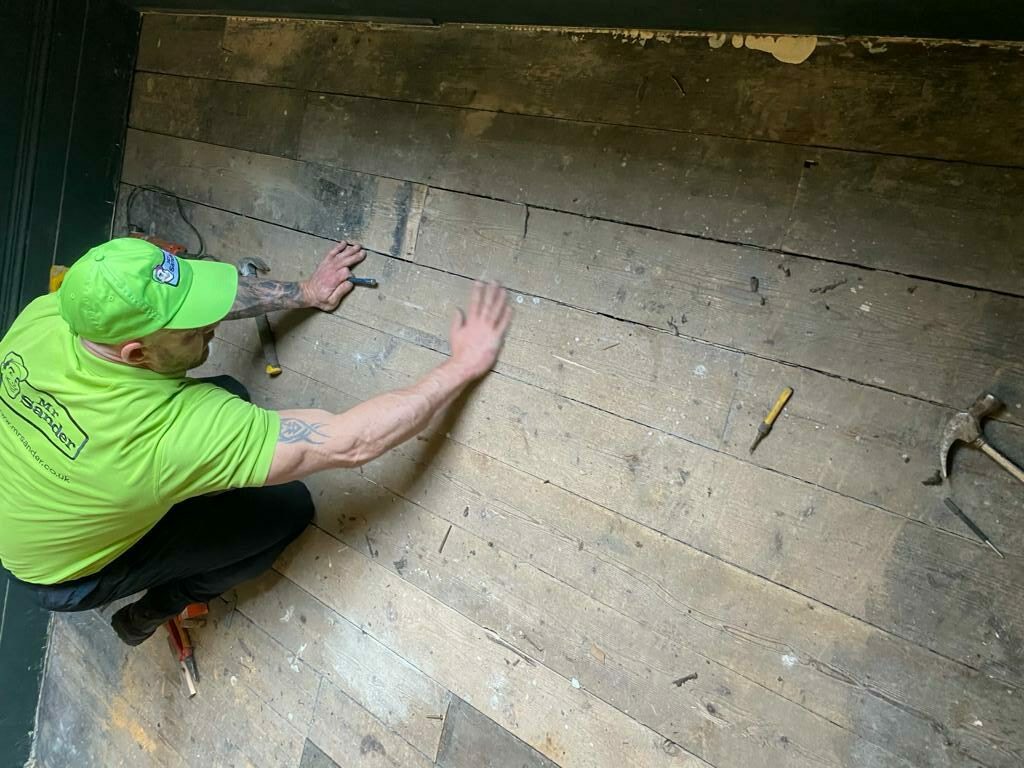
Sanding Techniques
- Sanding the Floor: Once repairs are complete, sanding the floor can help to level out any unevenness and prepare the surface for a new finish. Use a drum sander for large areas and an edge sander for the corners and edges. Start with coarse-grit sandpaper and gradually move to finer grits. Always sand in the direction of the wood grain to avoid scratches.
- Dust Removal: After sanding, thoroughly clean the floor of all sawdust using a vacuum, followed by a damp cloth. This ensures a clean surface for applying the new finish.
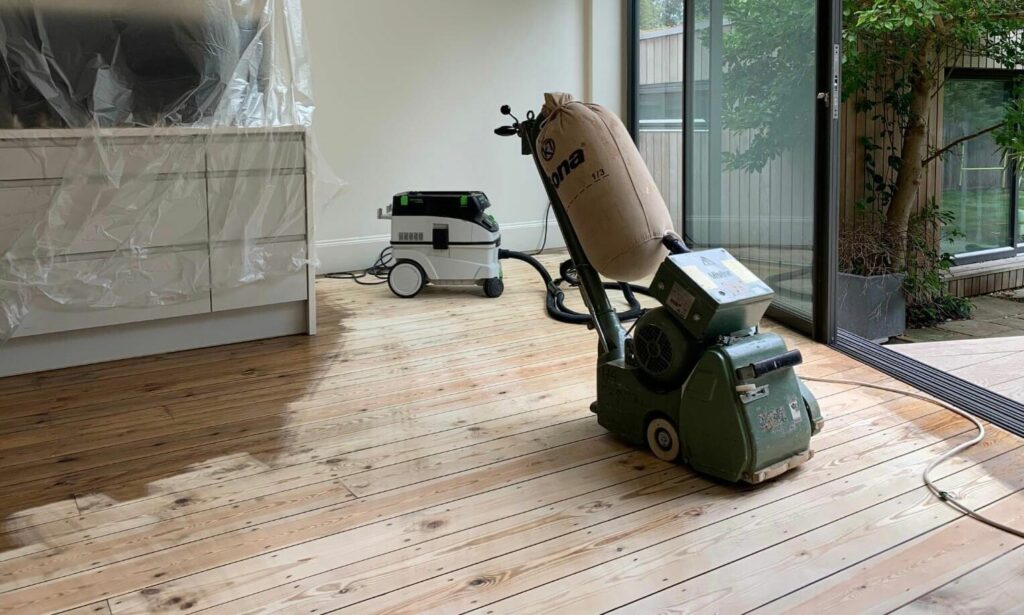
Refinishing
- Choosing the Right Finish: Select a finish that complements the age and style of the property. Traditional finishes such as natural oils or wax are preferable for historic properties as they allow the wood to breathe and can be easily touched up in the future.
- Application: Apply the chosen finish according to the manufacturer’s instructions. Use a brush or roller for oils and varnishes and a soft cloth for waxes. Apply multiple thin coats rather than one thick coat, allowing sufficient drying time between each layer.
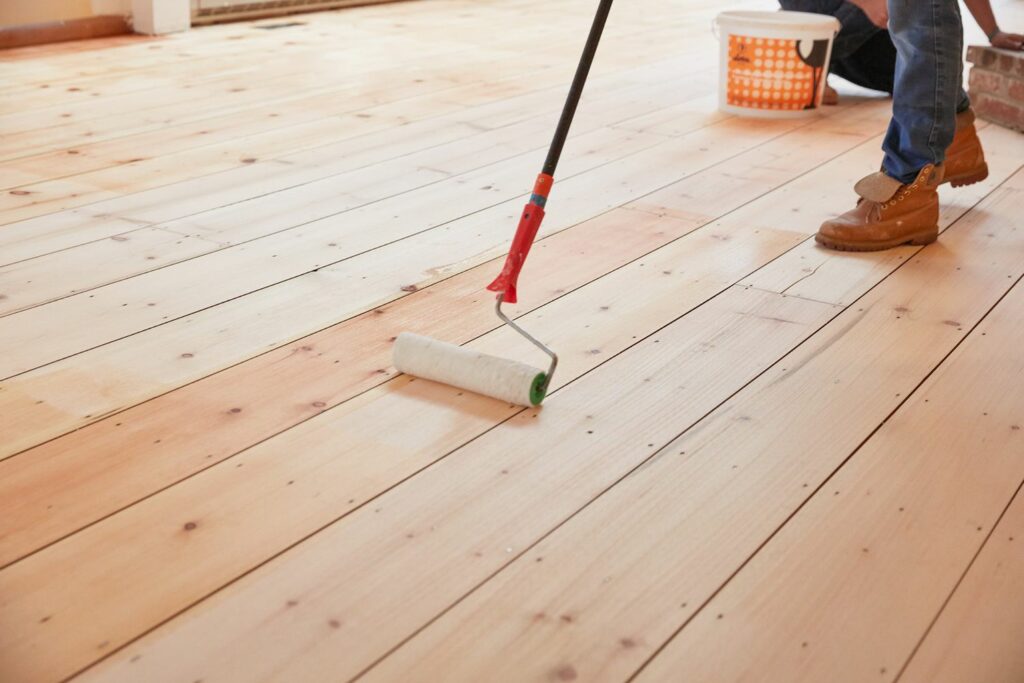
Dealing with severe damage
- Replacing Damaged Boards: In cases where floorboards are too damaged to be repaired, find replacement wood that matches the age and patina of the existing floor. Reclaimed wood from a similar period property can provide the best aesthetic match.
- Professional Restoration: For extensive damage or when high precision is required, it might be best to hire professionals who specialize in the restoration of historic wood floors. They can ensure that the techniques used are appropriate for the period and style of the property.
Regular Maintenance
- Aftercare: Once the restoration is complete, implement a regular maintenance programme to preserve the finish and condition of the floor. This includes regular cleaning, immediate attention to spills, and periodic re-application of wax or oil.
By following these restoration techniques, you can ensure that original pine floorboards are not only preserved but also continue to enhance the character and value of British heritage properties. Each step should be carried out with respect for the material’s history, ensuring that these cherished features can be enjoyed for generations to come.
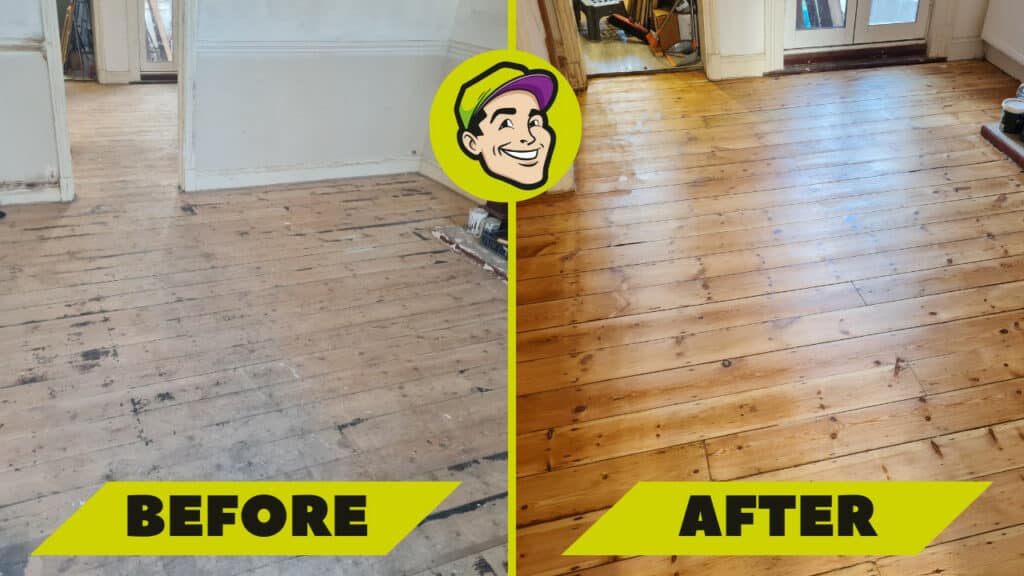
Conclusion
The preservation of original pine floorboards in British properties is not merely a matter of maintaining a building’s aesthetic appeal; it is a commitment to safeguarding a tangible piece of history. Each floorboard carries the marks and patina of past lives and events, offering a unique insight into the architectural and cultural narratives of its time. By investing in the proper care and restoration of these historical elements, property owners ensure that these stories continue to resonate with current and future generations. The benefits of preserving original pine floorboards extend beyond the visual and tactile to encompass economic advantages, environmental sustainability, and psychological well-being. Properties that maintain their authentic features often see enhanced market value and appeal strongly to niche buyers who value heritage. Environmentally, retaining original materials reduces waste and consumption of new resources, aligning with more sustainable building practices. Moreover, the presence of natural materials like wood has been shown to improve indoor air quality and contribute to a sense of well-being among occupants. However, the journey to effectively preserve these floorboards requires awareness of the threats they face—from environmental damage and physical wear to inappropriate renovations and pest infestations. Addressing these challenges through regular maintenance, careful assessment, and professional advice is crucial. When restoration is necessary, it should honour the original materials and methods used in the floorboards’ construction, thereby maintaining the property’s historical integrity. In conclusion, the careful preservation of pine floorboards is an ongoing dialogue between past craftsmanship and present-day conservation efforts. It is a testament to our respect for history and our responsibility to future generations. As we move forward, let us continue to cherish and preserve our heritage with the understanding that, in doing so, we enrich our own lives and those of others in the community. This commitment not only honours those who came before us but also sets a precedent for those who will follow.

Sanding
We provide virtually dust-free sanding with our continuous belt machinery with mobile extraction units, giving you a safer environment for your family.
Oiling
This organic finish not only adds beauty to your home but also has exceptional water-repellent characteristics, making it easier to clean and maintain.
Waxing
This natural floor finish offers the softest and most mellow appearance – and leaves your floor able to breath.
Buffing
Using soft buffing machines (and hand-polishing where required) will bring a wonderful sheen to your newly-finished floor.
Repairs
We offer a full assessment of your wooden floors to determine what repairs are needed to provide the perfect working surface for the later stages of sanding, staining and sealing.
Restoration
We offer a comprehensive restoration process designed to address floors that are improperly fitted or damaged over time through wear and tear.
Request a fixed price quote for your wood floor restoration now
Simply enter your postcode below to get started.
Services
Wood Floor Sanding Wood Floor Restoration Wood Floor Scratch Repair Squeaky Wood Floor Repair Parquet Floor Sanding Parquet Floor Restoration Commercial Floor Sanding Church Floor Sanding Community Centre Floor Sanding School Floor Sanding Gap Filling Gap Filling with ResinCopyright © Mr Sander®
Privacy & Cookies Terms & Conditions Complaints Procedure Cancellation Rights Sitemap